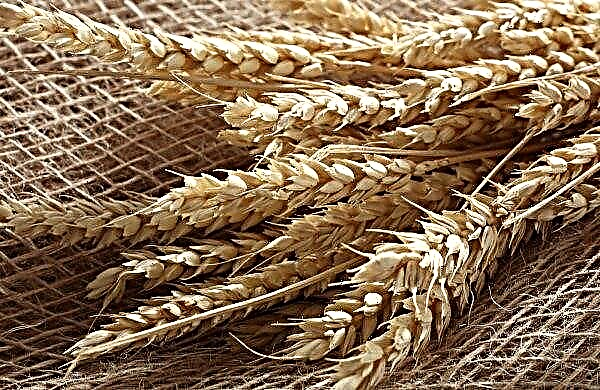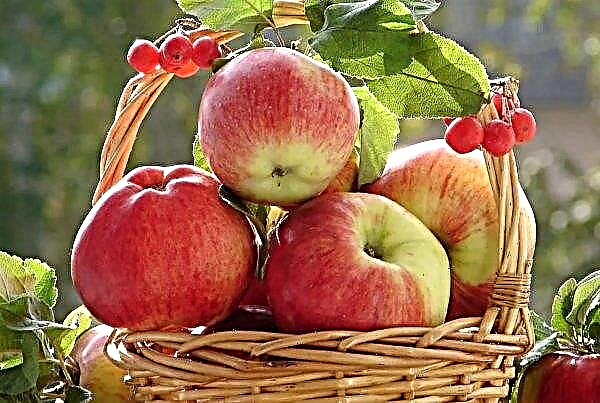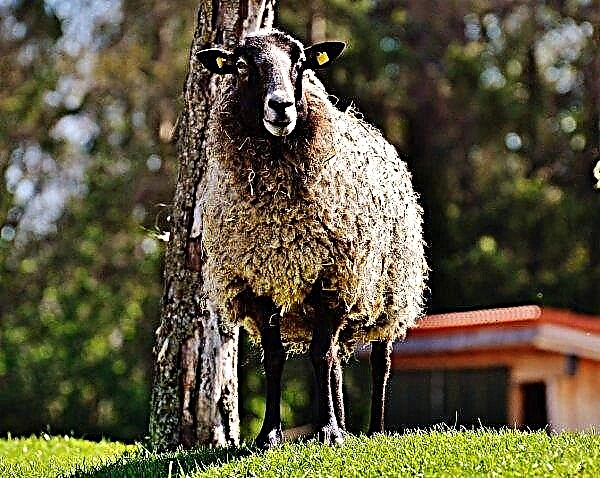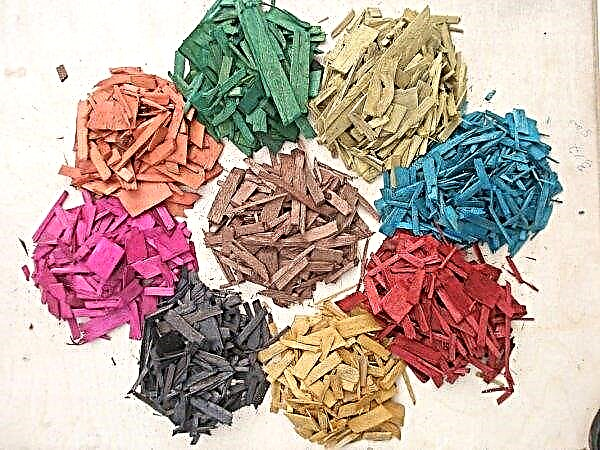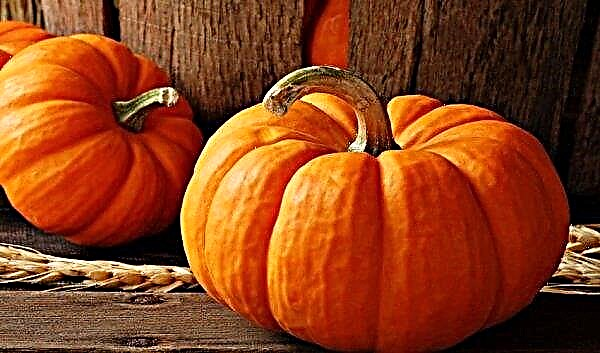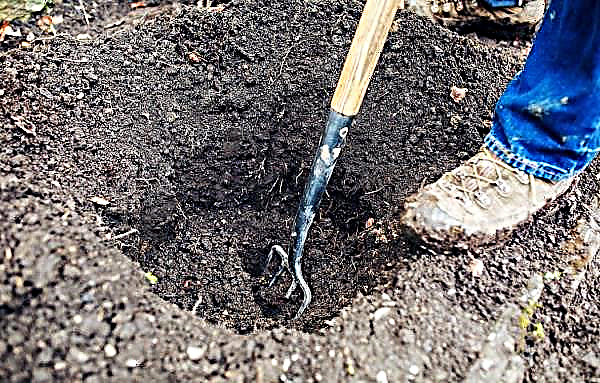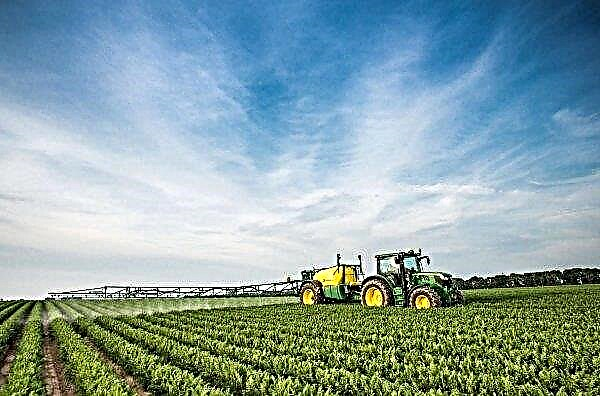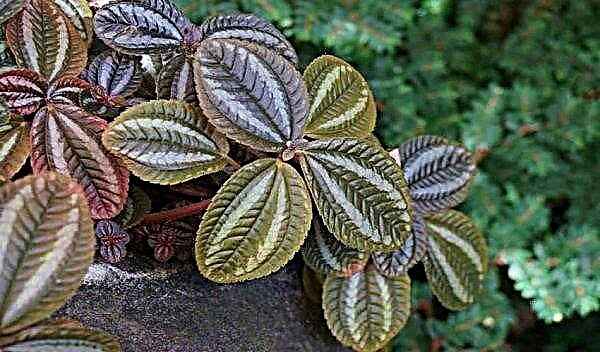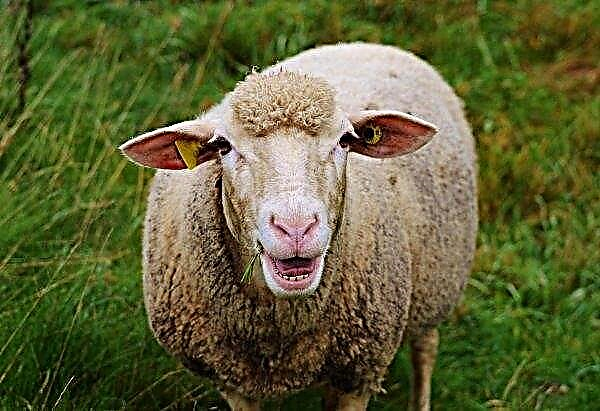People have been cultivating winter wheat since ancient times. This culture has the optimal composition of proteins, fats and carbohydrates necessary for the production of the most valuable food product - bread. In Russia, grain was grown not only for food, but also for sale. For a long time, work has been actively carried out to develop new, improved varieties, one of which is the Scepter.
Selection history
Winter wheat Scepter is widely used in many farms of the Russian Federation. The originator and owner of the patent is Poletaev Gennady Mikhailovich, who, in the process of selection of this variety, was able to endow it with a mass of positive qualities. The "parents" of the Scepter are Albidum 114 and Etna. The culture is listed in the State Register and approved for cultivation since 2004.
 Wheat contains selenium and phytoestrogens - substances that protect the body from the development of cancer cells.
Wheat contains selenium and phytoestrogens - substances that protect the body from the development of cancer cells.
Huge areas of agricultural land are allotted for sowing Scepter. In the Smolensk region alone, the territory designated for cultivating the variety is about 1650 hectares, not to mention the Kardymovsky region, where the area under sowing is about 6.5 thousand hectares. Elite seeds are produced in the Moscow, Oryol and Nizhny Novgorod regions.
Grade description
The scepter belongs to the soft varieties of wheat. It is successfully used for the manufacture of bakery products, as it contains large particles of starch, which is why wheat flour is ultimately thin and crumbly.
The height of wheat is 80–96 cm. Spikelets of medium density, friable, mainly whitish, with a strong waxy coating, and grains have a powdery or semi-glassy consistency. The stems are thin-walled, hollow along the entire length. Leaves are flat, about 8–10 cm wide. The root system is fibrous, slightly submerged in the ground.
Video: Scepter winter wheat
Main characteristics
Like most varieties bred as a result of breeding, the Scepter has improved characteristics, taking from its predecessors all the best. This applies to both climate resilience, disease, and high crop yields.
Productivity
Wheat is characterized by high productivity - about 66 kg / ha. Indicators may vary up or down depending on the quality of care for the crop, as well as the weather conditions of a particular region. For example, in the Nizhny Novgorod region, the maximum indicator was 73.4 centner / ha, and in the Volga-Vyatka region - 48 centner / ha.
Sowing and harvesting dates
Winter wheat is sown in early - mid-September. In principle, the Scepter variety is not particularly demanding in this regard. The main thing is that at least 60 days remain before the first frosts, during which the first few pairs of double leaves will have time to form. At the same time, do not rush to landing, as the culture can quickly increase the aboveground part, which will complicate the wintering. The culture forms seedlings, and winters under the snow. In the spring, at a temperature of + 12 ... + 15 ° С, growth resumes.
 To get a rich harvest, it is important to observe not only the timing of sowing, but also to properly prepare the territory and material.
To get a rich harvest, it is important to observe not only the timing of sowing, but also to properly prepare the territory and material.
Best of all, the culture takes root on the ground, where before that, siderates, corn, and potatoes grew. Seeds are pre-treated with special preparations. Wheat grows best on sod-podzolic soils fertilized with organic and mineral compounds. The territory is cleaned of weed grass. With severe blockage, herbicides are used, but in this case, sowing is done no earlier than 2 weeks later.
The duration of the growing season of winter wheat lasts from 320 to 350 days. The harvesting process begins in August, is carried out by the method of combining. At this time, the grains ripen, fill up, accumulating in themselves a supply of nutrients. It is important to clean until the ears are dry and crack, and the seed will simply spill out - so you can lose a decent part of the crop.
Important! The largest seeds are selected for sowing, which allow plants to safely survive winter frosts and preserve the entire complex of nutrients.
Seeding rates
When planting wheat, the sowing rate must be observed. This is due to the fact that in the thickened areas, as a result of a lack of light, a significant part of the stems will die, and the rest will slow down their development. The situation is not better in the case when the planting is sparse - as a result of the incomplete use of the land there will be more corn, not giving grain, but only interfering with the development of a healthy culture.
For the Skipper variety, the optimal seeding rate is 180-200 kg per 1 ha. It is important to take into account the depth of seed backlog, which will determine the structure of future stems, their development and, ultimately, productivity. The best option is to deepen into the soil no more than 2-3 cm - so the plant quickly emerges, forms a solid tillering node.
Video: Presowing treatment of seeds of winter wheat
Sustainability
The Scepter variety is characterized by excellent winter hardiness, so it can be grown even in the cold northern regions, in contrast, for example, from the Don Lighthouse or Yubileinaya, which are sown in the central and southern regions of Russia. If the winter is snowy, wheat can withstand frosts to -25 ° С, without precipitation - up to -17 ° С.
Wheat tolerates well and spring return frosts down to -12 ° С, therefore, the Scepter is recognized as the best variety of domestic selection. With prolonged shutdown on the vine does not lie and does not crumble. Due to these qualities, wheat is suitable for cultivation in regions with different weather and climatic conditions.
Important! In order to avoid the possibility of defeat by diseases and pests, the seed is treated with special preparations before planting (Gumistar, Vincit, etc.).
It should be noted and the resistance of the culture to diseases, in particular, such as powdery mildew and brown rust. This is partly due to the fact that most pathogens are suppressed by severe frosts. If, however, sowing overtakes an ailment in the form of snow mold, thanks to the rapid tillering in the spring, it quickly restores the stalk, which ensures a good harvest.

Grain quality
Scepter variety is included in the list of valuable types of wheat, as it is characterized by high quality grain. It contains a lot of carbohydrates, which are the main source of energy. There is also a number of vitamins, minerals and other biologically active substances that have a beneficial effect on the human body. By the amount of protein, grains surpass many of their analogues, as well as other crops.
 The weight of 1 thousand grains is, on average, 44 g. Flour obtained from grinding wheat Scepter is most suitable for the manufacture of bread products, as it is soft and friable. Baking is voluminous and porous.
The weight of 1 thousand grains is, on average, 44 g. Flour obtained from grinding wheat Scepter is most suitable for the manufacture of bread products, as it is soft and friable. Baking is voluminous and porous.
Winter wheat Scepter is a relatively young but widespread crop, the main advantage of which is the ability to cultivate in areas with different climatic conditions. Subject to the rules of agricultural technology, its productivity is much higher than spring or other winter varieties, which, of course, gives the culture a special priority.

